
книги / First steps in biotechnology. ╨Я╨╡╤А╨▓╤Л╨╡ ╤И╨░╨│╨╕ ╨▓ ╨▒╨╕╨╛╤В╨╡╤Е╨╜╨╛╨╗╨╛╨│╨╕╨╕
.pdf
Fig. 4
2.You are going to listen to the podcast about the stages of the biotechnology history. Before listening match the words in the box to the photographs above.
Frankenfood |
Fermentation |
Antibiotic |
Environmental friendly bacteria/oil spills |
Cloning |
|
3. Match the words from the box with their definitions.
They are used to prevent and treat diseases, especially those caused by bacteria.
They convert crude oil and gasoline into non-toxic substances such as carbon dioxide, water and oxygen and help create a cleaner, healthier environment.
GM food has even been called so in the press, a term inspired by the novel Frankenstein by Mary Shelley.
Creating a copy of another person.
The yeast multiplies as it eats the sugars in the mixture and turns them into alcohol and CO2.
WHILE LISTENING
4. Listen to the podcast and check your answers to exercise 3. https://learnenglish.britishcouncil.org/en/magazine-articles/biotechnology
5. Listen again and circle the correct word in these sentences. a) Beer, bread and cheese / cookies are all produced using biotechnology.
b) The food and drink above are all produced by the fermentation of microorganisms/ micro-creatures.
11
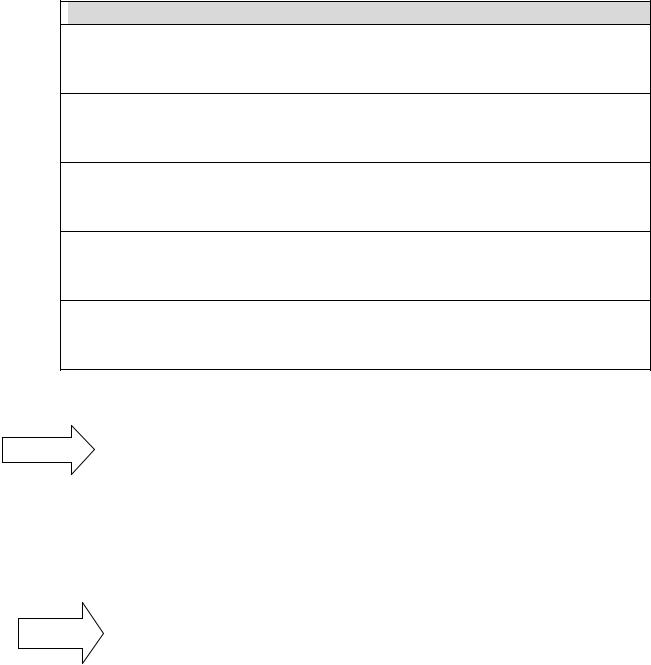
c)The first antibiotic was made in China / Greece in about 500BC.
d)In 1928 / 1958 Alexander Fleming discovered penicillin and it was considered a medical miracle.
e)Our modern consumer society produces a lot of waste / rubbish which needs to be disposed of safely and without harmful end products.
f)They convert crude oil and gasoline / biogas into non-toxic substances.
g)The genetic modification of plants / animals and crops has been in practice for many years.
h)The European parliament, UNESCO and WHO all declared that human cloning is both morally and legally wrong / right.
6. List history steps in time order.
 Topic Biotech History
Topic Biotech History
First
Next
Next
Next
Last
Rate
AFTER LISTENING
7.Choose one of the questions below to talk about.
1.What is the most interesting fact about biotech history?
2.Can you describe any biotechnological discovery?
8.Work with a partner who has chosen a different question. Take turns to tell your partner the answer to the question you have chosen. Ask fol- low-up questions.
Predict
PREPARING TO READ
1.Before you read look at the words in the box and predict which terms refer to the biotechnological branches.
12
bioremediation |
biofuel |
green biotechnology |
|
bioleaching |
white biotechnology |
bioinformatics |
|
bioeconomics |
|
blue biotechnology |
|
BIOLOGICAL WEAPON |
|
Biogas |
|
|
RED BIOTECHNOLOGY |
|
|
|
|
|
|
2. Read the text and check your answers to exercise 1.
|
BIOTECHNOLOGY BRANCHES |
|
|
|
|
|
||
Biotechnology has applications in |
ed with these molecules, on a large |
|||||||
four major industrial areas, including |
scale."[16] Bioinformatics plays |
a |
key |
|||||
health care (medical), crop production |
role in various areas, such as functional |
|||||||
and agriculture, non food (industrial) |
genomics, structural |
genomics, |
and |
|||||
uses of crops and other products |
proteomics, and forms a key compo- |
|||||||
(e.g. biodegradable |
plastics, vegetable |
nent in the biotechnology and phar- |
||||||
oil, biofuels), and environmental uses. |
maceutical sector. |
|
|
|
||||
For example, one application of bio- |
|
Blue biotechnology is a term that |
||||||
technology is the directed use of organ- |
|
has been used to describe the ma- |
||||||
isms for the manufacture of organic |
|
rine and aquatic applications of bi- |
||||||
products (examples include beer and |
|
otechnology, but its use is relative- |
||||||
milk products). Another example is us- |
|
ly rare. |
|
|
|
|
|
|
ing naturally present bacteria by the |
|
Green biotechnology is biotechnol- |
||||||
mining industry in bioleaching. Biotech- |
|
ogy applied to agricultural process- |
||||||
nology is also used to recycle, treat |
|
es. An example would be the selec- |
||||||
waste, cleanup sites contaminated by |
|
tion and domestication of plants |
||||||
industrial activities |
(bioremediation), |
|
via micropropagation. Another |
ex- |
||||
and also to produce biological weapons. |
|
ample is the designing of transgenic |
||||||
A series of derived terms have been |
|
plants to grow under specific envi- |
||||||
coined to identify several branches of |
|
ronments in the presence (or ab- |
||||||
biotechnology; for example: |
|
sence) of chemicals. One hope is |
||||||
Bioinformatics is an interdisciplinary |
|
that green |
biotechnology |
might |
||||
field which addresses biological prob- |
|
produce |
more |
environmentally |
||||
lems using computational techniques, |
|
friendly |
solutions |
than tradition- |
||||
and makes the rapid organization as |
|
al industrial agriculture. An example |
||||||
well as analysis of biological data pos- |
|
of this is the engineering of a plant |
||||||
sible. The field may also be referred to |
|
to express a pesticide, thereby end- |
||||||
as computational biology, and can be |
|
ing the need of external application |
||||||
defined as, "conceptualizing biology in |
|
of pesticides. An example of this |
||||||
terms of molecules and then applying |
|
would be Bt corn. Whether or not |
||||||
informatics techniques to understand |
|
green biotechnology products such |
||||||
and organize the information associat- |
|
as this |
are |
ultimately more envi- |
||||
|
|
13 |
|
|
|
|
|
|
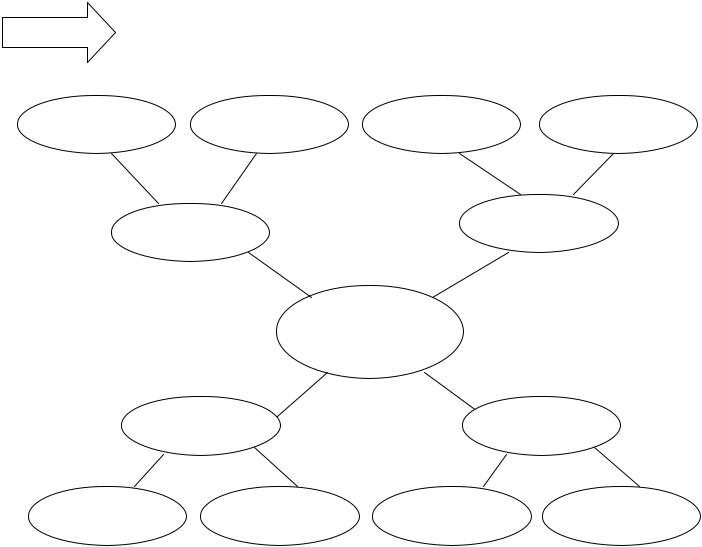
ronmentally friendly is a topic of considerable debate.
Red biotechnology is applied to medical processes. Some examples are the designing of organisms to produce antibiotics, and the engineering of genetic cures through genetic manipulation.
White biotechnology, also known as industrial biotechnology, is biotechnology applied to industrial processes. An example is the designing
of an organism to produce a useful chemical. Another example is the using of enzymes as industrial catalysts to either produce valuable chemicals or destroy hazardous/polluting chemicals. White biotechnology tends to consume less in resources than traditional processes used to produce industrial goods.]
The investment and economic output of all of these types of applied biotechnologies is termed as "bioeconomy".
“Biotechnology.” Wikipedia: the Free Encyclopedia.
Wikimedia Foundation, Inc. 12th March 2016. Web. 18th March 2016.
< https://en.wikipedia.org/wiki/Biotechnology>
Classify
WHILE READING
3. Read the text and fill in the cluster (Fig. 5).
Application |
Application |
Application |
Application |
Branch |
Branch |
|
Biotech branches
Branch |
Branch |
Application |
Application |
Application |
Application |
Fig. 5
14
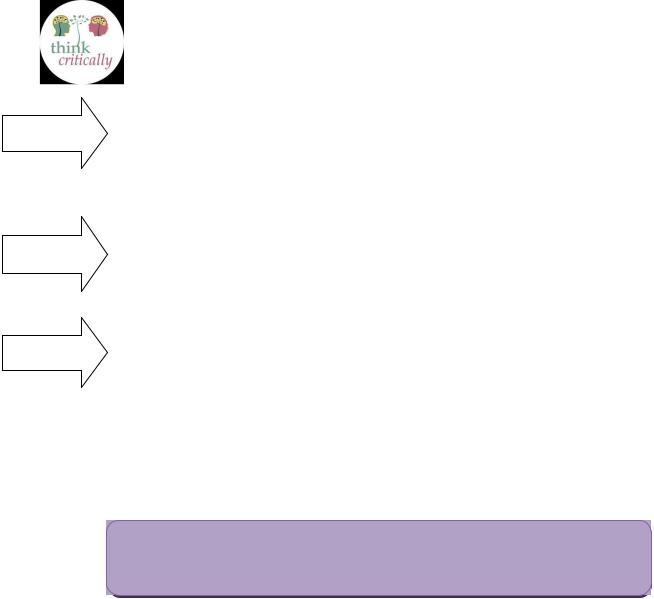
AFTER READING
Remember
Evaluate
4.In the text there is little information about blue biotechnology. Write questions that you could ask to obtain more facts about this branch. Discuss the questions with your partner.
5.Work in small groups. Discuss what the commercial applications of the biotech research might be.
6.Discuss with your partner which branch is the most essential. Why?
CRITICAL THINKING
1.Work with a partner and remember some biotechnological products you deal with in your everyday life.
2.Choose one product and write some facts about it using the following categories.
Origin
Branch of biotechnology producing it
How it works
Reason why it is useful
3. Imagine you are going to present one of the products to your group
Create
mates. Make a list of ideas to include in your presentation.
4.Now look at the table in exercise 5. Did you include the same things in your list?
5.Write a heading from the box in the gaps to complete Column A of the table.
disadvantages |
summary |
advantages |
Introduction & general facts |
history |
|
|
|
|
A plan for presentation |
B Information in each part of presentation |
|
1____________________ |
|
|
Name of a product |
|
|
2____________________ |
|
|
Who made / discovered it? |
|
|
15
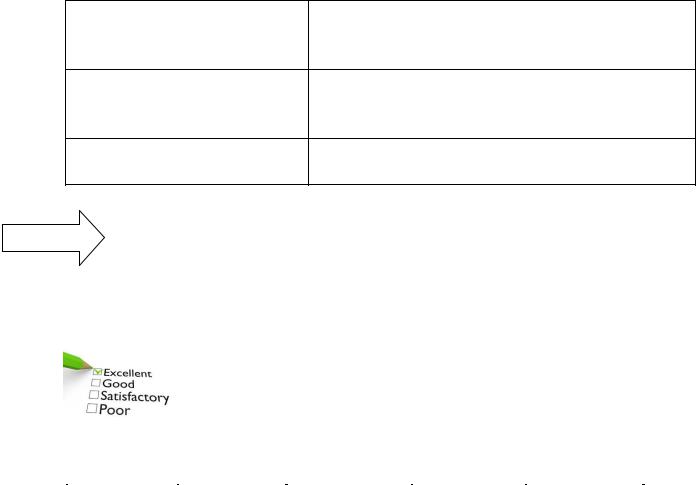
3____________________
Interesting? Why worth to speak about?
4____________________
Expensive / dangerous? Problems?
5____________________
Good? Use or not?
6. Choose one of the biotechnological products. Write notes in column B of Prepare the table. Create the presentation for your group mates about biotech-
nological realities in your life.
7. Work with a partner. Using your notes, take turns to tell each other about the product you have chosen. Make the presentation.
Evaluation criteria for your presentation.
|
1 |
2 |
3 |
4 |
To- |
|
|
|
|
|
tal |
Organiza- |
Audience |
Audience has |
Student pre- |
Student pre- |
|
tion |
cannot un- |
difficulty fol- |
sents infor- |
sents infor- |
|
|
derstand |
lowing |
mation in |
mation in |
|
|
because |
presentation |
logical se- |
logical, inter- |
|
|
there is no |
because stu- |
quence |
esting se- |
|
|
sequence of |
dent jumps |
which audi- |
quence |
|
|
information |
around. |
ence can fol- |
which audi- |
|
|
|
|
low. |
ence can fol- |
|
|
|
|
|
low. |
|
Subject |
Student |
Student is un- |
Student is at |
Student |
|
Knowledge |
does not |
comfortable |
ease with |
demon- |
|
|
have grasp |
with infor- |
expected |
strates full |
|
|
of infor- |
mation and is |
answers to |
knowledge |
|
|
mation; |
able to an- |
all ques- |
(more than |
|
|
student |
swer only ru- |
tions, but |
required) by |
|
|
cannot an- |
dimentary |
fails to elab- |
answering all |
|
|
swer ques- |
questions. |
orate. |
class ques- |
|
|
tions about |
|
|
tions with |
|
|
subject. |
|
|
explanations |
|
|
|
|
|
and elabora- |
|
|
|
|
|
tion. |
|
16

Graphics |
Student us- |
Student occa- |
Student’s |
Student’s |
|
|
es superflu- |
sionally uses |
graphics re- |
graphics ex- |
|
|
ous |
graphics that |
late to text |
plain and re- |
|
|
graphics or |
rarely support |
and presen- |
inforce |
|
|
no graphics. |
text and |
tation. |
screen text |
|
|
|
presentation. |
|
and presen- |
|
|
|
|
|
tation. |
|
Mechanics |
Student’s |
Presentation |
Presentation |
Presentation |
|
|
presenta- |
has three mis- |
has no more |
has no mis- |
|
|
tion has |
spellings |
than two |
spellings or |
|
|
four or |
and/or |
misspellings |
grammatical |
|
|
more |
grammatical |
and/or |
errors. |
|
|
spelling er- |
errors. |
grammatical |
|
|
|
rors and/or |
|
spellings. |
|
|
|
grammatical |
|
|
|
|
|
errors. |
|
|
|
|
Eye Contact |
Student |
Student occa- |
Student |
Student |
|
|
reads all of |
sionally uses |
maintains |
maintains |
|
|
report with |
eye contact, |
eye contact |
eye contact |
|
|
no eye con- |
but still reads |
most of the |
with audi- |
|
|
tact. |
most of re- |
time but |
ence, seldom |
|
|
|
port. |
frequently |
retuming to |
|
|
|
|
returns to |
notes. |
|
|
|
|
notes. |
|
|
Elocution |
Student |
Student’s |
Student’s |
Student uses |
|
|
mumbles, |
voice is low. |
voice is |
a clear voice |
|
|
incorrectly |
Student incor- |
clear. Stu- |
and correct, |
|
|
pronounces |
rectly pro- |
dent pro- |
precise pro- |
|
|
terms, and |
nounces |
nounces |
nunciation of |
|
|
speaks to |
terms. Audi- |
most words |
terms so that |
|
|
quietly for |
ence mem- |
correctly. |
all audience |
|
|
students in |
bers have dif- |
Most audi- |
members can |
|
|
the back of |
ficulty hearing |
ence mem- |
hear presen- |
|
|
class to |
presentation. |
bers can |
tation. |
|
|
hear. |
|
hear presen- |
|
|
|
|
|
tation. |
|
|
|
|
|
|
Total Points: |
|
17
OBJECTIVESREVIEW |
|
I can … |
|
understand a film about biotechnology. |
Very well_____________Not very well |
listen for details. |
Very well_____________Not very well |
organize information in a cluster. |
Very well_____________Not very well |
organize information and present it. |
Very well_____________Not very well |
give a descriptive presentation. |
Very well_____________Not very well |
|
WORDLIST |
antibiotic |
combat |
bioeconomics |
carry out |
biofuels |
disease |
biogas |
environmental friendly |
bioinformatics |
fermentation |
bioleaching |
frankenfood |
bioremediation |
biofuel |
cloning |
hereditary material |
cell |
oil spills |
18
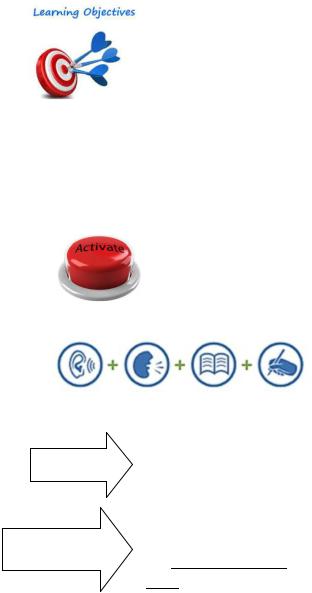
Remember
Understanding key vocabulary
UNIT 2
SOME FACTS ABOUT GENETICS
In this unit you will …
Listen / watch, read and talk about
genetics
DNA
disease associated with the changes in a genetic code of a human
Learn how to …
listen and take notes
give a poster presentation
analyze information
Activate your knowledge.
What is a gene and where is it located?
Why do people look similar to their parents?
PREPARING TO WATCH
1.In pairs discuss the term GENETICS. Give some facts about genetics you are familiar with.
2.Match the words to their definitions.
TIP: If necessary use http://www.yourdictionary.com/biotechnology or https://en.wikipedia.org/wiki/Genomics.
1 Genome assembly |
a) the transmission of characteristics from parent to |
|
offspring by means of genes in the chromosomes. |
2 Gene |
b) any organic compound containing both an amino and |
|
a carboxylic acid functional group. |
3 Heredity |
c) is a large biomolecule, or macromolecule, consisting |
|
of one or more long chains of amino acid residues. |
4 Amino acid |
d) is a unit on a chromosome that determines a specific |
|
trait in an organism. |
19

5 Protein |
e) a wide variety of de novo assembly tools available for |
|
constructing genomes. |
WHILE WATCHING
3.Watch the video “A Brief Introduction to Genetics” on  http://www.youtube.com/watch?v=F4wHaORe9-c. You will hear the
http://www.youtube.com/watch?v=F4wHaORe9-c. You will hear the
words in bold below. Choose the correct option to complete the sentences.
1 Genetics is a discipline of biology / zoology.
2 Genetics is the science of heredity and variety / multiplicity of a living organism.
3 Modern genetics began with the work of Ivan Pavlov / Gregor Mendel. 4 Gene is composed of a chain of four / five different nucleotides.
5 The sequence of the nucleotides is the genetic information organisms inherit / produce.
6 Amino acids sequence is known as the genetic code / key.
7 Proteins carry out almost all the functions / classes needed for cells to live.
8 DNA sequencing allows researchers determine the sequence of nucleotides / nucleotypes in DNA fragments.
9 With this technology researchers have been able to study the molecule sequences in association with many human gifts / diseases.
4.Watch the video about genetics again and check your answers to exercise 3.
DISCUSSION
5.Discuss with your partner which problems can be solved with the help of genetics.
Understanding key vocabularies using visuals
PREPEARING TO READ
1. Match the words to the photographs (Fig. 6).
1helix
2virus
3DNA
4mitochondria
5chromosome
6nucleus
20
